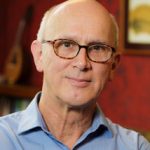
The Diocese of Madison consists of eleven counties in southcentral and southwestern Wisconsin. It was formed in 1946 from parts of the Archdiocese of Milwaukee and the Diocese of La Crosse (which diocese is famous, at the Catholic Answers office, for having been the first bishopric of Raymond Cardinal Burke, our favorite papabile). The present bishop of Madison is Robert C. Morlino, who was appointed in 2003. His flock consists of 277,000 people, about 30 percent of the area’s total population.
Why does this small diocese have so many priests and seminarians? In the last decade it ordained 23 new priests, which is good, but soon comes the boom: There are 35 men in the seminary. If 80 percent of them make it to ordination, the diocese will have increased its number of priests by a quarter, giving it a ratio of one priest per 1,600 people, one of the best ratios in the country.
These statistics are derived from a nine-minute video the diocese has produced for this year’s Annual Catholic Appeal. The video is one of the best I’ve seen. While the whole video is good, the best part concerns the seminarians. It’s clear that many of them are not homegrown. They’ve come to Madison from elsewhere, attracted by—what? Probably not the dairy farms nor even the plethora of Ph.D. holders in the city of Madison (which ranks number one for Ph.D. holders per capita for U.S. cities).
No, the seminarians were drawn by something else. Much of that something else must be Bishop Morlino himself. I wonder whether a good part of it is his singular policy (singular so far as I know—perhaps another American bishop or two does likewise) of having all of his seminarians learn how to celebrate Mass in both the Ordinary and Extraordinary Forms. Much good will come from this, even in (especially in?) parishes where the Ordinary Form will predominate or where it will be used exclusively.
Newer priests who learn how to celebrate the older form well will take equal care in celebrating the newer form. When Masses are celebrated reverently and effectively by these priests at parishes A, B, and C, and when parishioners vote with their feet (as they tend to do), older priests in parishes X, Y, and Z will take notice. They will start to set aside some liturgical habits acquired in the halcyon days of two or three decades ago and will adopt some “new old” habits. Eventually the tenor of parish life will change throughout the diocese, no matter which form is used in a particular parish or how old the pastor.



